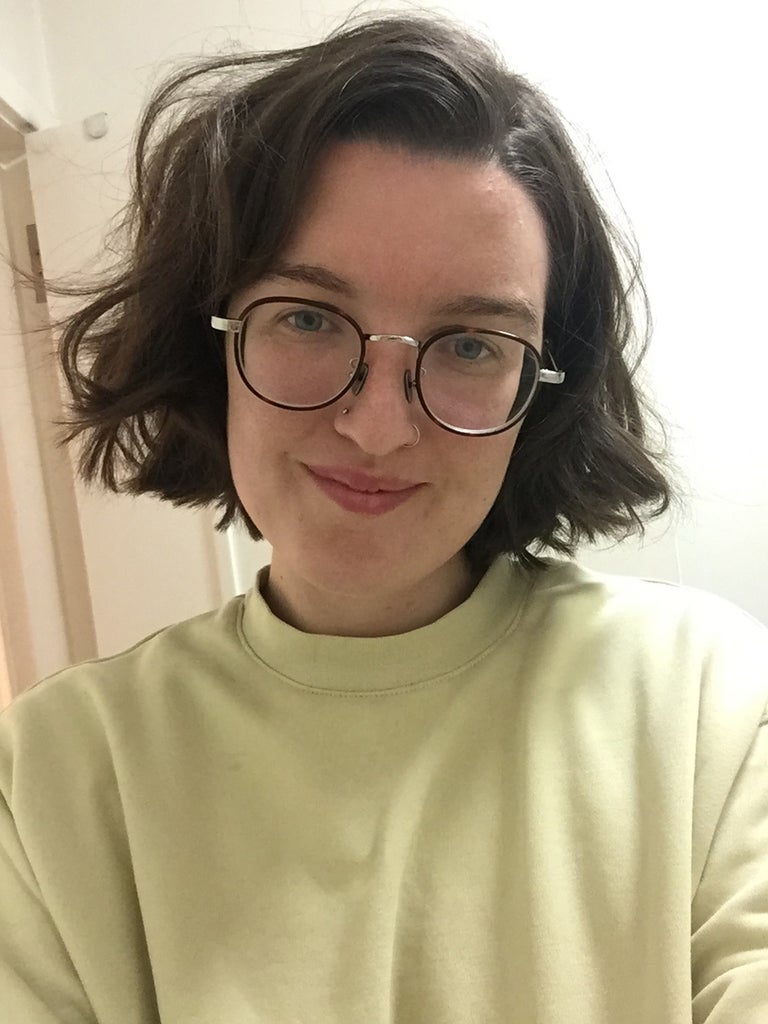I have never been someone who Does Her Hair. The length has varied, and occasionally veered into impersonating Timothée Chalamet, but the most exciting I’ve really got styling-wise is a hairdryer (or hair gel, once in a blue moon). For the most part, I wash it and I air-dry it and that’s that. This is due to laziness more than anything else, but also being unwilling to spend money on hair tools I haven’t used since I was 13 and had Gerard Way posters on my walls. Styling your hair took time, money, effort, and probably some forehead burns — so I wasn’t about it, thanks very much.
But over the course of the pandemic, something shifted for me. I stopped making an effort and slobbed around like the best of them. After a while, though, it left me feeling adrift. I wanted to do something with myself that would pull me out of this three-day pajama funk and make me feel put together. I’ve always been pretty pared back when it comes to makeup (the goal is clear, clean skin, a little blush, brows, and lipstick on a Big Day) so I wasn’t feeling a clown-makeup fantasy. Outfits-wise, I’m happy to take it slow and gently reintroduce my post-lockdown body to the concept of waistbands and bras. But when it comes to hair, I’m finally ready for a style that looks effortless but isn’t. And the putting it together is part of the fun.
My inspiration for this has come in part from my recent immersion in period dramas and historical dress. As a lesbian, I have dutifully watched every queer women period drama that’s been released in recent years (Colette, Portrait Of A Lady On Fire, The World To Come), which reintroduced me to a world of queer coding in clothing and style. I wanted to immerse myself in queer readings of historical fashion where short hair was an act of rebellion popularized by queer and lesbian women. Unlike modern queer coding through hair, which is bound up in styles like undercuts and mullets, I wanted to escape into more vintage looks. Like the queer women who defined and explored fashion and beauty trends in the last century, I wanted to find a balance between looking effortless and looking done, which strays far enough from conventional conceptions of modern femininity that it’s like a non-verbal if you know, you know.
It led me down the rabbit hole of compulsively watching videos like “I Tried Following A Real Edwardian Hair Care Routine”, “Attempting 100 Years Of Victorian Hair!” and “cutting my hair off cause I want to look like a 30s movie star” to try and find the look I was after. And then The Dig came out in January of this year and my search was over. The film was long and boring and I loved it, but my favorite part was Carey Mulligan‘s soft, wavy bob. It looked done but disheveled, old-fashioned but with enough movement to be modern, and I was obsessed with it.

Which is how I ended up, mask on in a salon chair, at London’s Gielly Green with artistic director Skye Edwards, talking through the Carey Mulligan haircut I’d fixated on for months. Unfortunately for me, Carey and I have very different hair types: We both have naturally straight hair, but mine is almost aggressively thick. In my naivety I’d hoped that a haircut in and of itself would make it wavy; I was obviously delusional. Edwards quickly (and kindly) reminded me that styling is integral to a look like this, and the cut was designed to look good both styled (if I’m feeling adventurous) and more like a modern French bob when straight. This meant short at the back of the neck and chin length, with some softening layers around the head and framing the face.
After cutting once when wet and again when dry, Edwards went in to style using a barrel brush and hairdryer, shaping the waves to look done but not too done. By the time she’d finished, my hair was the spitting image of Carey’s before she gets all windswept watching Ralph Fiennes dig up a ship. For the next couple of days I was obsessed with the results, which made me feel like my granny but also, when I put on a beret, like a 1940s evacuee. But after the first wash, I was brought back down to earth as I worked to find new ways to style it straight.

After a few washes, I’ve now decided I’ll rotate between blowdrying straight and curling with a wand, sectioning hair and curling pieces a mix of towards and away from the face to achieve a more natural look. Unlike the cut on the day, which was deliberately set and verging on granny chic (which is absolutely my special-occasion vibe), day-to-day wear is a bit more modern, chaotic, and 1920s. It’s perfect for my post-lockdown life as someone who Does Her Hair — but still doesn’t put that much effort into it.
This story was originally published on Refinery29 UK.
Like what you see? How about some more R29 goodness, right here?
from Refinery29 https://ift.tt/2SAisnO
via IFTTT
